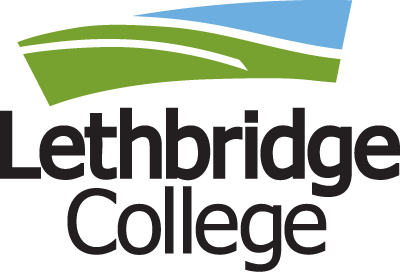Penny Takahashi (Renewable Resource Management ’03) doesn’t speak much “computer.”  And at the time she met them, the five students from Lethbridge College’s Computer Information Technology (CIT) program didn’t know a word of “fish.”
And at the time she met them, the five students from Lethbridge College’s Computer Information Technology (CIT) program didn’t know a word of “fish.”
But Takahashi, fisheries technician at the college’s Aquaculture Centre of Excellence (ACE), and the five second-year students – Gary Schenk, Walter Sipchenko, Jacob Bootsman, Chris Spitzer and Jonathan East – managed to communicate somehow to produce a computer program that could easily become an industry standard for recording the essential aspects of a fish’s life history. Sort of an “economy of scale” if you will.
At ACE, it will spare Takahashi the frustration of thrashing through hours of paperwork. As a production facility for grass carp (used in southern Alberta to control weeds in waterways), ACE has to record vital information to ensure biological control of its product. Takahashi records fish parentage to ensure a broad genetic base, what spawning conditions work best for each brood fish, best food make-up, hormone dosages, weight, and the obvious: birth and death dates.
“In the past, that required hundreds of pages of information, none of it correlated and all of it difficult to access,” says Takahashi. “With no budget, we approached Susie Kennedy (then CIT program leader; now Lethbbridge College’s registrar) for assistance.”
Each second-year class is required to complete a project for a real-world client, part of the practicum component woven into many Lethbridge College programs. Kennedy listened to Takahashi’s plight and lateralled the ball to the lads, who, while they didn’t know it at the time, were about to become experts in the sexual proclivities of their “clients.”
Using Microsoft Access, information storage and retrieval software, the quintet created a program allowing Takahashi to pull up everything she needs to know about an individual fish. She knows which carp are the best spawners, what times and under what conditions they do their best work, and whether they like to leave the lights on.
The information, not so easily accessible, allows ACE to weed out poor breeders among its 200 fish, save on labour and cut food costs. “We learned a lot about fish reproduction,” says Schenk, a database wizard from Lethbri dge. “It was new terminology for us.It was an exciting project to work on because we knew it would be used.”
The project has given all five an opportunity to be part of a team. Each member brought a skill to the table. Schenk’s database skills were joined with Calgarian Spitzer’s ability to build the necessary tables. Bootsman, from Lloydminster, originally started the database and moved on to documentation. East, from Lethbridge, polished the data, while Hosmer, B.C.’s Sipchenko, wrote the training manual and gave instruction on how to update the program. They were aided by ACE’s Sandra Price who handled the financial aspects and also learned “fish.”
“We learned you can’t do a project like this without others,” says Schenk. “You can’t possibly understand all the concepts involved yourself.”
“I thought it would be a classic textbook project,” says Schenk. “I never imagined it would be that phenomenal, that we’d have to explain things in fish language. It’s prepared me to work directly with clients to build programs as they want them.”
All five are impressed with the program and the quality of instruction they received at Lethbridge College. East, heading for a computer science degree, says the 2+2 agreement between the college and the University of Lethbridge was the main selling point. Spitzer agrees.
“The 2+2 was the big selling feature,” he says. “I can get accredited and get the highest certification the Canadian Information Processing Society offers.”
For Schenk, who started at the university level, the program’s hands-on aspect was key.
“I did two years at university; it was nothing like the education I got here,” he says. “There, we were learning computer science without the computers.”
Spitzer, too, came from a university program with classes of 70 students and no hands-on component.
“Here, instructors take the time to work closely with you,” he says. “Some stay after their lab times to make sure you understand a concept, or allow you to call them after hours for help.”
All came away from the ACE project with acquired skills and interests. Spitzer started on web design, but has developed a taste for databases; East had never done programming, but developed a taste for solving problems with numbers. Sipchenko has honed his skills as a technical writer.
“I want to go back to school after graduation,” says Sipchenko. “This program has opened me up to opportunities.”
Takahashi, too, is thrilled with the results.
“I am very pleased with the professionalism of the CIT students. They were great and I am very thankful for such a tool for ACE.” So, with graduation last spring, the five head either off to school or off to work, taking with them their newfound knowledge of carp. Before they left, they were asked to name their program. It’s called the Fish Information System for Heredity. Of course: FISH.


